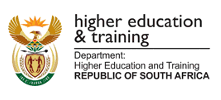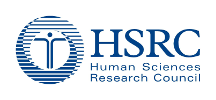In a rapidly changing workforce of the 21st century, the creation of entry and re-entry pathways to further qualifications, or opportunities to change qualifications, is critical. There is no doubt that much work has already been undertaken in South Africa in attempting to measure education and labour market outcomes, particularly since the 1990s. At the same time, we need to obtain a much better understanding of the pathways that young South Africans follow through the education and training system and into the workplace, and the impact of different types of experience on the early career. Such analyses can help young people to choose appropriate programmes as well as assist policy-makers in identifying resource priorities. They can also contribute to debates about the role of education in promoting social mobility and economic development.
The objective of Theme 5 is to obtain a better understanding of the pathways undertaken by young people through the education and training system into the workplace. Key questions suggested by an international literature review include investigating how the way in which people are employed affects the level of skills development they acquire as a result of their employment, and how the ways in which people are employed change over time. The key research question that Theme 5 seeks to address is: How does an in-depth knowledge of the dynamics underpinning learner, student and worker mobility along various education, training and labour market trajectories enhance our understanding of the key influences on mobility and its impact on skills development?
The first phase of the study involved a literature review of national and international educational panel studies, and building up a network of individuals and institutions who have undertaken such studies. International studies reviewed include: Longitudinal Survey of Australian Youth (LSAY) (Australia); Youth in Transition Survey (YITS) (Canada); and Longitudinal Study of Young People (England). In South Africa, in October 2012, there were consultations with the following: JET Education Services; Birth to 20 Plus research group (Wits and HSRC); Datafirst (UCT), NiDS/Saldru (UCT); KiDS (UWC); LMRU (Rhodes); CCRI (UKZN); and EPU/REAL (Wits). The purpose of these reviews and meetings was to gain lessons before undertaking this longitudinal study; to build a network to coordinate the study and to seek a support group to participate in a technical advisory committee.
The consultation process suggested a multicohort panel study with the HSRC and JET as the lead for the different cohorts. For a number of reasons, we have settled with a single cohort for now.
In 2011, the HSRC undertook the Trends in Mathematics and Science Study (TiMSS 2011). The data from this nationally representative sample of 12 000 Grade 9 students also became the first wave of the South African Youth Panel Study (SAYPS).The overarching purpose of the SAYPS is to map the linkages between the education and training systems and the labour markets through the lives of learners over time.
Nine thousand students provided consent that they could be contacted and interviewed in subsequent years. In the 2011 SAYPS wave, data was collected on the following: student achievement; demographical information; home educational resources; parents’ highest level of education and parental support of learner education activities; educational resources at school; teacher characteristics; career guidance; attitudes towards education and school environment; time spent in related study activities; attitudes to maths and science; aspirations for the future (work, study at FET, university, etc.); and social and economic indicators (at home and school). In 2013 we re-established contact with the 9 000 participants to confirm their contact address and establish where they were in 2013 (Grade 11, Grade 10, FET college, working, or not in education and training). At the end of 2013, the cohort will be interviewed telephonically.





